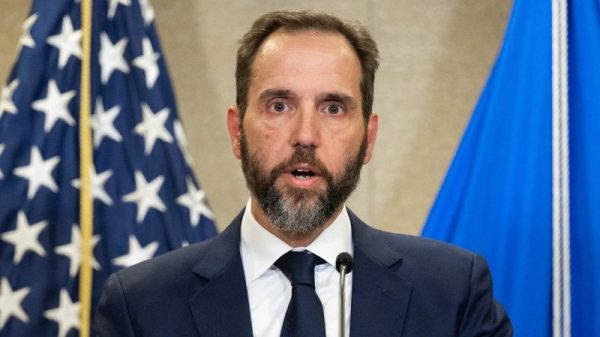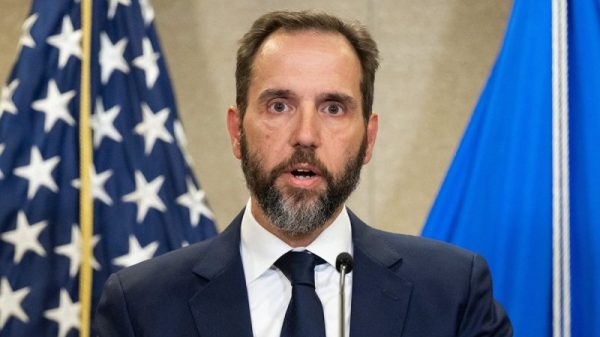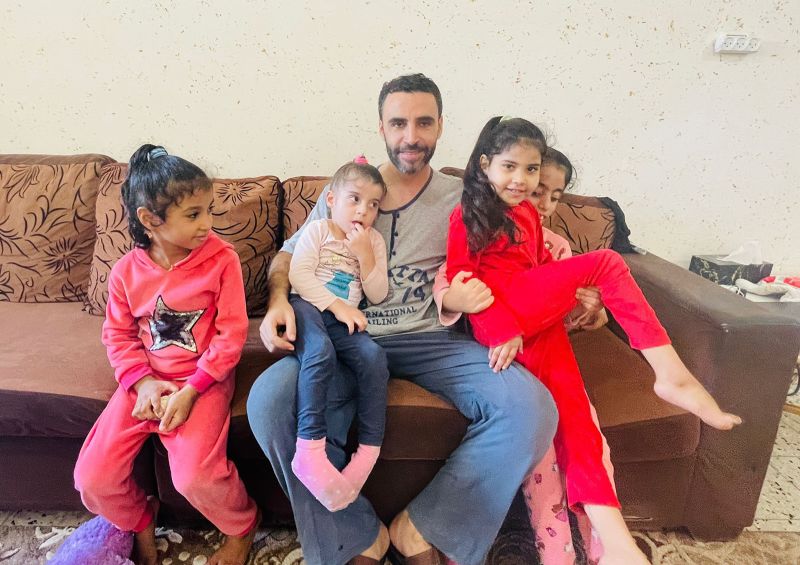Since Israel’s complete siege on Gaza began, Hazem Saeed Al-Naizi, the director of an orphanage in Gaza City, had been gripped with fear, worried about when food, water and other basic necessities might run out for the dozens of children and young people in his care, most of whom are living with disabilities.
When a strike hit a mosque near the Mabarat Al-Rahma orphanage on October 27, blowing out windows, scattering the building with debris, igniting a fire and filling the air with smoke, Al-Naizi said he was confronted with the agonizing decision of whether to evacuate the children and young people.
On November 2, as the Israel Defense Forces (IDF) closed in on Gaza City, Al-Naizi said he had no choice but to move the 40 people out of the orphanage — eight of them infants — loading them, along with non-perishable food and batteries, into three large buses. It took about two hours to evacuate the group, according to Al-Naizi, as many of the children had to be carried. They only managed to travel about 1.2 miles, before they had to set up a temporary shelter.
“Many streets have become closed as a result of the backfilling of destroyed buildings, as well as the street being unsuitable for vehicles to move,” Al-Naizi said. “We were not able to escape to the south of Gaza City. It had become completely besieged.”
Carers like Al-Naizi face an impossible choice — stay put and risk being killed or flee somewhere with no promise of safety. “Where will I leave these children, on the street?” Al-Naizi said. “We have no hope, except that this war will end soon.”
Israel launched its military campaign with the stated aim of destroying Hamas and to save the more than 240 hostages taken during the militant group’s brutal October 7 attack, which Israeli authorities said killed around 1,200 people. Israel’s relentless aerial bombardment and ground assault has so far killed at least 11,470 people, including 4,707 children, according to the Palestinian Ministry of Health in Ramallah, in the occupied West Bank, citing medical sources in the Hamas-controlled enclave.
More than two-thirds of Gaza’s 2.2 million people have been internally displaced since the war started, with many of them now staying in overcrowded temporary shelters that are running out of food, water, drugs and sanitation capacity as aid trickles in. More than 15% of those internally displaced are disabled, according to the UN’s Office for the Coordination of Humanitarian Affairs.
Streams of Palestinians – including women, children and the elderly – have been making their way south in a growing exodus along daily evacuation corridors announced by the IDF.
For Gazans living with disabilities — who number about 48,000, with more than a fifth of those children, according to a Palestinian Central Bureau of Statistics report published in 2019 — the prospect of evacuating is fraught, if not impossible.
Fleeing strikes, unable to see or hear them
Heba Abu Jazar Sama was working on her laptop when she said her house in Gaza started to shake.
“My father and mother started screaming, thinking that I had been killed,” Sama added. “When the dust cleared and they found me and my sister (who is also deaf), we started crying a lot. Had I not moved for a few moments, the stones would have fallen on my head.”
The IDF has repeatedly called on civilians to move south of Wadi Gaza, a waterway bisecting the center of the strip, as it intensifies its assault on Gaza City and the north of the territory.
After Sama’s home was bombed, she and her family were displaced to a shelter.
“There was no hope, no water, no electricity, no internet, and no blankets to cover us from the cold at night. We were suffocated and very tired,” she said about the conditions in the shelter.
Up to 70 people could be sheltered in one room, with some forced to stay on the stairs, said Jamal Al Rozzi, executive director of the National Society for Rehabilitation, who used to live in Gaza City and fled south for his children’s safety. Children with disabilities who might lack the ability to chew could go hungry, because there are not enough staff members available to blend their food, he said.
People who are incontinent have reduced access to diapers or accessible toilets, which means they cannot clean themselves, increasing the spread of urinary tract infections, said Reham Shaheen, a rehabilitation specialist for the international NGO, Humanity & Inclusion. The scarcity of specialized mattresses for quadriplegic Palestinians further restricts their movement, causing bedsores.
Shaheen warned that in crisis situations, women with intellectual disabilities are more likely to face sexual violence because they are living in spaces where men and women are packed into one place – often sharing bathrooms. Communication challenges also prevent survivors from reporting sexual assault.
Lack of accessibility, connectivity is compounded at temporary shelters
For disabled Gazans who have made it to temporary shelters in the south, services that they rely on to get through each day either don’t exist or are scarce, making survival more challenging than for able-bodied people.
People have reported queueing for hours to access food and water, where the UN said civilians are exposed to potential Israeli airstrikes. Those who are hearing or visually impaired, need to be accompanied while collecting supplies, making it harder for them to get what they need.
“We have followed a new diet to reduce consumption of materials to be enough for us for a longer period. For example, adults are not allowed to eat more than one meal a day, and we add mashed biscuits to children’s milk,” he said.
“As for drinking and treated water, we cannot access it. We drink directly from the well.”
Israeli strikes have injured at least 29,000 Palestinians in Gaza, according to the Palestinian Ministry of Health in Ramallah, forcing doctors to triage patients with life-threatening injuries. But the health care needs of especially vulnerable populations, including women and disabled people, can be overlooked.
Drug shortages mean people are running out of medication that is not always available in local pharmacies, including Baclofen, a muscle relaxant used by people with cerebral palsy, meningitis and motor neurone disease, and Novatrim, an antibiotic treatment, added Ćerimovic, of HRW.
In the early days of the escalation, Al Rozzi and his staff of volunteers were handing out first aid supplies, mattresses, walkers and crutches to evacuees with disabilities. Now, he said, having access to a wheelchair has become a “luxury.”
Diminished access to electricity supply and battery shortages mean people with disabilities cannot power wheelchairs, elevators, nebulizers (a machine that turns liquid medicine into mist) or hearing aids. At least three communications blackouts have engulfed Gaza since October 7, reducing civilians’ ability to access information, contact displaced family members and document the horrors of the Israeli bombardment.
Blackouts have particularly impeded communication for deaf people, who rely on internet access to make video calls with sign language and receive life-saving information, human rights workers said.
Those with hearing disabilities become “isolated from the world,” said Fidaa Fouad Khamis Omar, a psychologist at the National Society for the Rehabilitation of the Disabled, based in Khan Younis, in southern Gaza.
‘Fear of the unknown dominates everyone’
Al Rozzi’s son Adham, 27, has cerebral palsy. Every time he hears the sound of shelling, he covers his ears and starts to shake. He cannot breathe properly, or move, Al Rozzi said. “He is becoming like stone.”
Trauma is not a new feeling for Gazan civilians, who have lived through years under siege. These severe restrictions have been fiercely criticized by international bodies including Amnesty International, who say Israel has violated international law.
Multiple carers and aid workers said they are struggling to provide mental health support for disabled civilians who are terrorized by the ongoing bombardment. Their own psychological trauma is compounded by the fear that they cannot protect their loved ones.
“Everyone has become withdrawn into themselves, not eating, drinking, sleeping, or thinking, and the fear of the unknown dominates everyone,” explained Omar, the psychologist.
As Israeli troops close in on Gaza City, Al-Naizi fears the orphanage will be displaced again. A second attempt to flee, he said, would be even more dangerous than the first. The longer journey to southern Gaza is limited to travel on foot, because there is not enough fuel for buses.
“We really suffer a lot and feel great terror,” said Al-Naizi. “We try to do our humanitarian duty towards these children, who have no fault except that they were born in Gaza.”







































